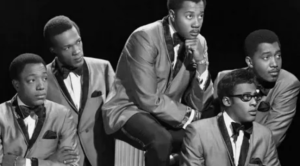
The Temptations: A Crystalline Plea in “Ain’t Too Proud to Beg”
The Temptations’ “Ain’t Too Proud to Beg” stands as a towering monument to the group’s ability to transform raw emotion into a sonic masterpiece. Released in 1966, the song marked a pivotal turning point for Motown, signaling a departure from the label’s earlier, more upbeat sound. It heralded a new era of soul music characterized by deeper emotional exploration and dramatic intensity.
Background
At the heart of “Ain’t Too Proud to Beg” lies a poignant narrative of love and loss. David Ruffin’s lead vocal is a tour de force, conveying a depth of despair and longing that is both harrowing and captivating. His voice, raw and emotive, becomes the emotional core of the song, drawing listeners into a world of heartache and yearning. The lyrics, crafted by the songwriting duo of Norman Whitfield and Edward Holland Jr., paint a vivid picture of a man desperate to reclaim his lost love, his pleas echoing with a sincerity that is both heartbreaking and inspiring.
The song’s arrangement is a masterful blend of orchestral grandeur and soulful intensity. The lush strings and brass sections create a dramatic backdrop for Ruffin’s vocal performance, while the rhythmic underpinning provides a steady pulse that drives the song forward. The interplay between the lead vocal and the group’s harmonies is particularly noteworthy, creating a rich and textured sound that is both powerful and intimate.
Beyond its emotional impact, “Ain’t Too Proud to Beg” was a significant commercial success, topping the R&B charts and becoming a top-ten pop hit. However, its enduring legacy extends far beyond its chart positions. The song has become a timeless classic, continuing to resonate with audiences across generations. Its exploration of universal themes of love, loss, and redemption has ensured its place in the pantheon of soul music.